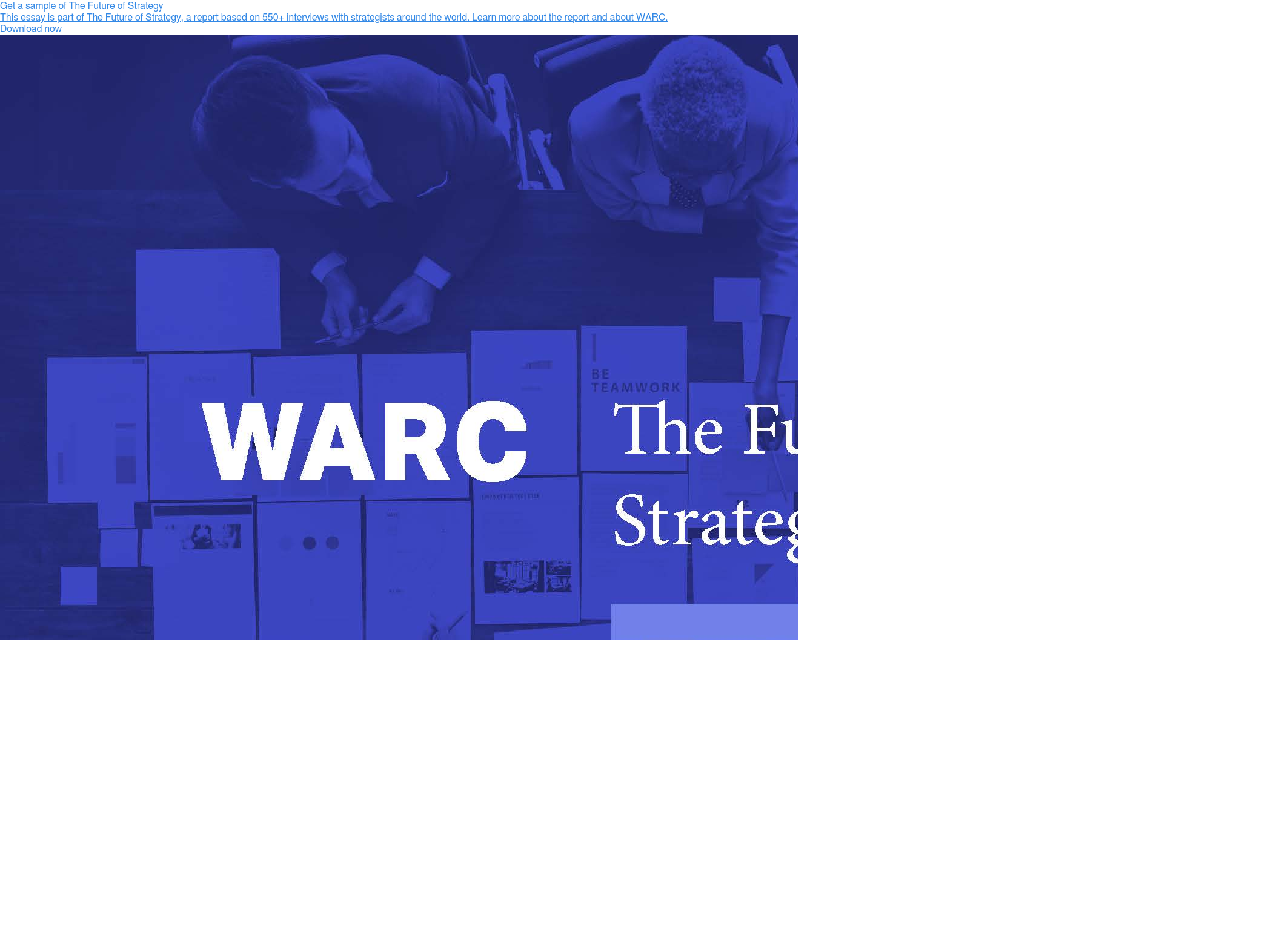Marketing’s problem is that it controls relatively few business growth levers, says Dan Burdett, Chief Marketing Innovation Officer EMEA, eBay, in an essay for WARC’s Future of Strategy report 2018.
You can’t really talk about this topic without talking about the big shifts that have happened in the industry in the last few years.
The first big shift is the pressure put on marketers and brand owners to take full accountability for not only their communications but also their strategy-related data. The second is that the visibility of digital marketing has allowed CFOs to have a much bigger role in deciding where the money is spent, and they’ve made marketers much more accountable in terms of showing their return on the bottom line.
The challenge is that, although we have more empowerment and more accountability, we don’t have any more levers than we had before. And I think marketing still controls relatively few business growth levers.
This has resulted in a shift of money toward performance channels – it doesn’t mean they’re the best channels, it just means they’re the most measurable. Things like direct response, search. And it’s relegated more traditional brand-building efforts further down the list of thing that marketers get to do because it’s too difficult to prove the value of it in the long term.
The third thing is the big data challenge. Everybody’s talked about it for years but when you’re in marketing there’s no less data coming in and it’s no less complicated, and it’s not coming any less quickly. Marketing departments are generally drowning in too much information. At eBay, we see our business results every hour, and people look at this morning’s business results and expect the marketing to be optimised that very same afternoon – of course it can’t be, but that’s what they think. And it’s changed the role of marketing, because we’re beginning to sacrifice the longer-term strategy for the short term gains.
As clients take more control of their data, you’re finding that data science is moving in-house, so it’s now owned by the client. Agencies that don’t have access to their own first-party data are at a distinct disadvantage. Benefiting are tech companies, the publishers, who are taking full advantage of being more data-literate and having much more access to information. Joint business plans and data-sharing agreements, are allowing us to have proper strategic relationships with these publishers. They allow us to do things that we could never do before, like audience-matching and placing pixels on our site for retargeting. These things obviously have a value for us, and it has a value for our partner, but it also has a benefit for the consumer if done well.
But there’s an inherent bias in always seeking strategic advice from the same group of publishers, so eBay is always actively looking to establish coalitions with new willing partners who have data resources, and expertise that they’re willing to share for mutual benefit.
While clients still seek outside advice there are many gaps that exist within most organisations. The ability to measure cross-channel really hasn’t shifted as it should have done in the last few years. So at eBay we’re investing a lot of money in customer-journey analytics, mapping the complex combinations of channels that people use to interact with our platform. We’re creating an end-to-end view of the customer journey, plotting revenue impact for every single touchpoint for different devices and different customer groups, which we can use to understand how we prioritise our marketing in order to place our bets.
We’re also investing as much money and as much time and effort in trying to understand how you can measure creative effectiveness as you can measuring media effectiveness. We’re using things like emotion and attention to understand how communication impacts people’s buying and selling behaviour, how things like biometrics can be combined with brand lift, which can be combined with our first party data. We’ve created a database of over 65,000 people that is allowing us to create a conversion-lift model for advertising. It allows us not just to measure the impact of creative on consumers in terms of sales, which matter to eBay, but it also allows us to work with our creative partners to give them great insight into what type of feelings and emotions consumers should feel as a result of seeing their communications to help move that needle.
It’s hard to move a business unless you convince the CFO or the CEO that what you do matters. So we’re creating a unified model that combines on and offline media effectiveness with the creative effectiveness stuff, with measures of brand equity, creating a sort of Net Promoter Score for marketing effectiveness. It’s an aggregate measure of where your marketing goes. And that’s important because not only does it allow us to optimise our evergreen campaigns – the stuff that’s always on – but it also allows us to create campaigns that are specific for different weather, different macroeconomic and different competitor situations, by device and by audience type. So that’s a bit of a game-changer for us: it’s measurement and optimisation.
Marketing can’t crack these problems alone and we need to form some valuable partnerships. So in a world where tactics are driving strategy, what does strategy look like going forward? What kind of strategic advice do marketers and brand owners actually need? In a world where media innovation has taken the world by storm, creating fantastic connection points with customers, how do we capitalise and use those to create amazing brand storytelling opportunities? Where’s the creative thought-leadership coming from in that space? And in a world where everybody is in some way competing with the guys in Seattle, how do we form the next most important coalitions that are going to benefit all of our businesses and come together to help drive the industry forward?


